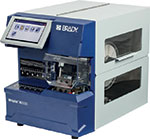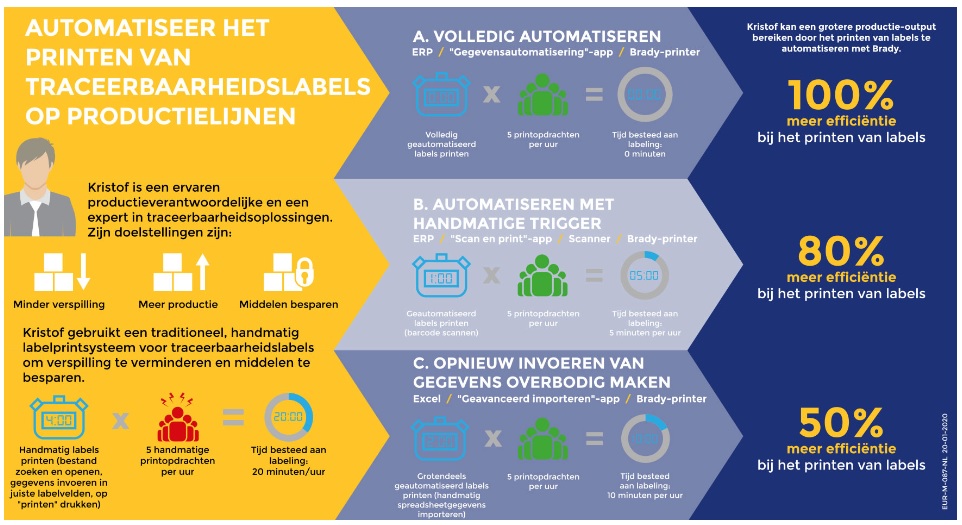Casestudy
Daktronics is een wereldleider in het ontwerpen en produceren van elektronische scoreborden, programmeerbare displaysystemen en grote videodisplays.
Daktronics Ireland verhoogde zijn operationele efficiëntie met een snellere kabelidentificatie. Het bedrijf kan nu een kabel identificeren met een wikkellabel in minder dan 5 seconden.
Uitdaging: Snellere kabelidentificatie
Daktronics Ireland gebruikte voornamelijk krimpkousen om grote hoeveelheden kabels te identificeren die ’s werelds meest bekeken scoreborden en digitale displays operationeel houden.
Krimpkousen zijn een betrouwbare oplossing om kabels te identificeren, maar het kost wel tijd om ze over een kabel te schuiven en thermisch in positie te fixeren. Door het toenemende aantal kabels was Daktronics Ireland actief op zoek naar een efficiëntere manier om kabels te identificeren.
Oplossing: Geautomatiseerd labels printen en aanbrengen
Brady biedt een ROI-calculator aan voor elk van zijn geautomatiseerde kabelidentificatieoplossingen. Bedrijven kunnen kiezen uit de beschikbare automatiseringsoplossingen door hun arbeidskosten, kosten van labelmaterialen en verschillende kabelvolumes in te voeren. Na het bekijken van de resultaten nam Daktronics Ireland contact op met Brady voor meer informatie over de BradyPrinter A6500 Printer-applicator voor wikkellabels.
De BradyPrinter A6500 wordt handmatig geactiveerd en print een label en wikkelt het om een kabel in maximaal 5 seconden. De identificatie van kabels met een diameter van 2 mm tot 16 mm kan worden geautomatiseerd met de BradyPrinter A6500. Gebruikers kunnen labelontwerpen maken en opslaan op de printer-applicator, of Brady Workstation-apps voor labelontwerp gebruiken voor extra functies. De BradyPrinter A6500 kan ook gegevens van de meeste ERP-systemen op een label printen.
Doordat Daktronics de BradyPrinter A6500 gebruikte om kabelidentificatie efficiënter te maken, schakelde het bedrijf ook over van krimpkousen naar wikkellabels. Brady bood begeleiding en ondersteuning bij het kiezen van de meest geschikte labelgroottes voor de kabeltypes die Daktronics gebruikt. Om ervoor te zorgen dat een label goed past, moet de grootte van een wikkellabel worden bepaald op basis van de diameter van de kabel die het identificeert.
Daarnaast stelde Brady het B-427 zelflaminerende wikkellabel uit vinyl in de vereiste groottes voor. Dit label blijft kleven en blijft leesbaar op de kabels die Daktronics gebruikt en in de omstandigheden waaraan ze worden blootgesteld.
Tot slot brachten technische experts van Brady een bezoek aan Daktronics om hun technische teams een eendaagse opleiding te geven over geavanceerde systeemopties, instellingen en optimaal onderhoud.

Resultaten: Minder dan 5 seconden om een kabel te labelen
Daktronics Ireland kan nu veel sneller kabels identificeren met behulp van betrouwbare wikkellabels. De tijd die nodig is om een kabel te identificeren, bedraagt nu slechts maximaal 5 seconden.
